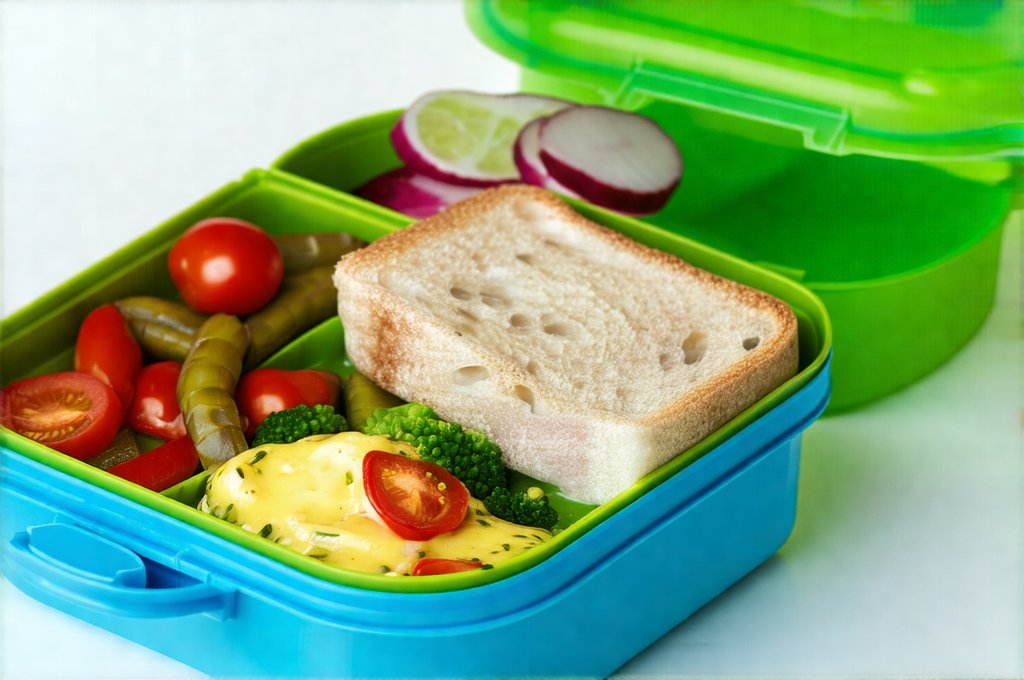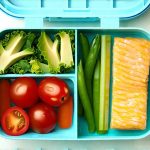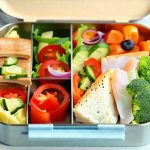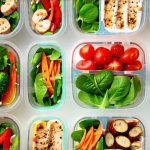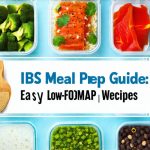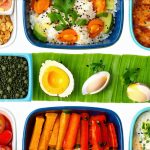Irritable Bowel Syndrome (IBS) can significantly impact daily life, and even something as simple as packing a lunchbox can become a source of anxiety for those managing this condition. The fear of triggering symptoms – bloating, pain, diarrhea, constipation – often leads to restrictive diets and a constant feeling of limitation. However, it is possible to enjoy satisfying and nourishing lunches without risking flare-ups. This article aims to provide practical lunchbox ideas specifically designed for individuals with IBS, focusing on foods that are generally well-tolerated and avoiding common triggers. We’ll move beyond just listing ingredients and explore strategies for building balanced meals that support digestive comfort while still being appealing and convenient.
The key to successful IBS management through diet isn’t necessarily about eliminating everything potentially problematic, but rather understanding your individual sensitivities. What bothers one person with IBS might not affect another. The low-fodmap diet is often recommended as a starting point for identifying triggers, but it’s crucial to remember that it’s intended as an elimination diet followed by reintroduction phases – not necessarily a long-term lifestyle. This guide leans heavily on generally well-tolerated foods and offers suggestions adaptable to individual needs and tolerances. Remember to consult with your healthcare provider or a registered dietitian for personalized guidance tailored to your specific IBS subtype and sensitivities.
Building an IBS-Friendly Lunchbox Foundation
The foundation of any good lunchbox, particularly for someone managing IBS, is thoughtful planning. It’s about more than just throwing some food together; it’s about creating balanced meals that minimize digestive distress and provide sustained energy throughout the afternoon. A great starting point is to focus on whole, unprocessed foods as much as possible. These tend to be easier to digest and less likely to contain hidden triggers. Prioritizing lean protein sources, easily digestible carbohydrates, and healthy fats will help you stay full and focused without upsetting your gut. Think about portion sizes too – smaller, more frequent meals can sometimes be better tolerated than large portions.
Consider the temperature sensitivity of foods as well. Some individuals find cold foods trigger symptoms, while others prefer them. Experiment to see what works best for you. Using insulated lunchboxes and ice packs is essential for maintaining food safety, especially during warmer months. Don’t underestimate the importance of hydration! Include a bottle of water or herbal tea – avoiding carbonated beverages which can contribute to bloating. Finally, mindful eating plays a role; taking time to chew your food thoroughly aids digestion and reduces the strain on your system.
A well-structured IBS-friendly lunchbox typically incorporates these elements: – A lean protein source (chicken, turkey, fish, tofu) – An easily digestible carbohydrate (rice, quinoa, potatoes – avoiding high-FODMAP options like apples or pears initially) – Healthy fats (avocado, olive oil, seeds) – Vegetables that are generally well-tolerated (carrots, spinach, cucumber) – A small portion of fruit (berries, bananas in moderation). Remember to always check labels for hidden ingredients or additives that might trigger symptoms. If you struggle with identifying these triggers, consider learning to say no to problematic foods.
Lunchbox Ideas: Real-World Examples
Here are a few concrete lunchbox ideas built around the principles above, offering variety and flexibility. These examples can be adapted based on your individual tolerances and preferences.
- Chicken & Rice Bowl: Grilled chicken breast (seasoned with herbs – avoid garlic and onion powder initially), steamed white rice, shredded carrots, and a drizzle of olive oil. A small handful of blueberries for dessert.
- Turkey & Spinach Wrap (Gluten-Free Tortilla): Sliced turkey breast, spinach leaves, avocado slices, and a smear of lactose-free cream cheese or hummus. Served with carrot sticks.
- Salmon & Potato Salad: Flaked salmon (baked or steamed), boiled potato salad made with mayonnaise based on olive oil and chives (avoiding onion/garlic), and a side of cucumber slices.
- Tofu & Quinoa Salad: Cubed firm tofu, cooked quinoa, chopped spinach, diced bell peppers (red or yellow – generally well-tolerated) and a light lemon vinaigrette dressing. A small banana on the side.
These are just starting points. Don’t be afraid to experiment with different combinations of these ingredients, always paying attention to how your body reacts. Keeping a food diary can be invaluable in identifying potential triggers and refining your lunchbox choices over time. Remember that consistency is key – regular meal times and predictable food choices can help stabilize your digestive system. Understanding common triggers for IBS flare ups can also help with planning.
Navigating Potential Triggers: Gluten & Dairy
Gluten and dairy are two common IBS triggers, but not everyone reacts to them. For those who do experience symptoms after consuming either of these, there are readily available alternatives. Gluten, found in wheat, barley, and rye, can cause inflammation and digestive upset in sensitive individuals. If you suspect gluten intolerance, consider switching to gluten-free bread, pasta, and wraps. Many supermarkets now carry a wide range of gluten-free products. Look for certified gluten-free options to ensure minimal cross-contamination. Rice noodles are also an excellent alternative to wheat-based pasta.
Dairy, specifically lactose, can be problematic for some with IBS due to difficulty digesting it. Lactose intolerance is different from a dairy allergy, but both can cause similar symptoms. If you suspect dairy sensitivity, try switching to lactose-free milk and yogurt or exploring plant-based alternatives like almond, soy, or oat milk. Hard cheeses often contain less lactose than soft cheeses and may be better tolerated in small amounts. Be mindful of hidden sources of dairy – it’s often found in processed foods and sauces.
It’s important to note that eliminating gluten or dairy without proper testing can hinder accurate diagnosis. If you suspect a sensitivity, consult with your healthcare provider for appropriate testing and guidance. Don’t automatically assume you need to eliminate these from your diet entirely; a trial period of elimination followed by careful reintroduction may help determine your tolerance level.
FODMAP Considerations & Smart Swaps
FODMAPs (Fermentable Oligosaccharides, Disaccharides, Monosaccharides And Polyols) are short-chain carbohydrates that can be poorly absorbed in the small intestine, leading to fermentation and gas production – common IBS symptoms. While a full Low-FODMAP diet requires expert guidance, understanding some key FODMAP triggers can help you make smarter lunchbox choices.
- High-FODMAP fruits: Apples, pears, mangoes, watermelon are best avoided initially. Opt for berries (strawberries, blueberries), bananas in moderation, or oranges.
- Vegetables: Onions and garlic are significant FODMAP contributors. Use chives and leeks instead, or infuse your cooking with herbs like basil, thyme, and rosemary. Broccoli and cauliflower can also be problematic for some; carrots, spinach, cucumber, and lettuce are generally better tolerated.
- Sweeteners: Honey and high-fructose corn syrup should be limited. Stevia or maple syrup in small amounts may be preferable alternatives.
Making smart swaps is key to maintaining a varied and enjoyable diet while minimizing potential triggers. For example: – Replace onion/garlic with asafoetida (hing) for flavoring – it mimics the flavor without the FODMAPs. – Choose lactose-free dairy products or plant-based alternatives. – Opt for gluten-free grains like rice, quinoa, or oats. Remember to read labels carefully and be aware of hidden FODMAP sources in processed foods.
Preparation & Convenience: Making Lunchboxing Easier
One of the biggest challenges with IBS is often the time and effort required to prepare specialized meals. Here are a few tips for making lunchbox preparation easier and more sustainable: 1. Meal Prep: Dedicate some time on the weekend to prep ingredients – chopping vegetables, cooking grains, grilling protein. This will save you valuable time during the week. 2. Batch Cooking: Cook larger quantities of food at once and portion them out into individual containers for easy grab-and-go lunches. 3. Utilize Leftovers: Repurpose dinner leftovers as lunch – just ensure they are IBS-friendly and stored properly. 4. Invest in Good Containers: Insulated lunchboxes and airtight containers will keep your food fresh, safe, and at the desired temperature. 5. Keep it Simple: Don’t overcomplicate things! Focus on a few core ingredients that you know you tolerate well and build meals around those.
Ultimately, managing IBS through diet is a journey of self-discovery. There’s no one-size-fits-all solution, but by focusing on whole foods, understanding your individual triggers, and prioritizing thoughtful preparation, you can create lunchboxes that support digestive comfort and empower you to live a full and active life. Remember to consult with your healthcare provider or a registered dietitian for personalized guidance tailored to your specific needs. If diarrhea is a major symptom, exploring K58.0 can be helpful. Additionally, if GERD symptoms are present alongside IBS, consider a GERD meal plan. For those struggling with dietary restrictions, learning to say no to gut triggers can empower you to prioritize your health. Finally, for constipation relief, try these high fiber meal prep ideas.

